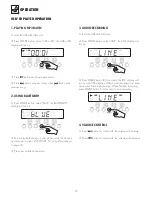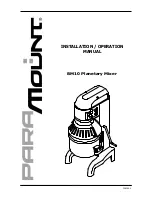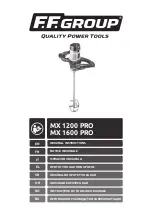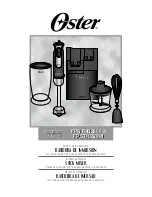
7
CONNECTOR INFORMATION
WHAT’S THE DIFFERENCE BETWEEN
BALANCED AND UNBALANCED?
CONNECTION METHODS AND INFORMATION
Connection
1
SHIELD
COLD
HOT
2
3
Balanced XLR Connectors
XLR
TRS
Hot (+)
Pin 2
Tip
Cold (-)
Pin 3
Ring
Shield (Ground)
Pin 1
Shield
In a word: “noise.” The whole point of balanced lines is noise
rejection, and it’s something they’re very good at. Any length
of wire will act as an antenna to pick up the random
electromagnetic radiation we’re constantly surrounded
by: radio and TV signals as well as spurious electromagnetic
noise generated by power lines, motors, electric appliances,
computer monitors, and a variety of other sources. The longer
the wire, the more noise it is likely to pick up. That’s why
balanced lines are the best choice for long cable runs. If your
“studio” is basically confined to your desktop and all
connections are no more than a meter or two in length, then
unbalanced lines are good—unless you’re surrounded by
extremely high levels of electromagnetic noise. Another place
balanced lines are almost always used is in microphone
cables. The reason for this is that the output signal from most
microphones is very small, so even a tiny amount of noise will
be relatively large, and will be amplified to an alarming
degree in the mixer’s high-gain head amplifier.
INSERT JACKS
The Insert jacks located by the microphone inputs
Using a TRS type jack connected to the mixers’ Insert I/O
(in/out) and a TS type jack to outer sources like an effects
processors or equalizers will individually control the sound
coming from that channel.
Be sure to use the correct wiring for this connection.
The TRS type jack should be connected to the Insert I/O plug
on the mixer, while the two TS type plugs will be individual
input and outputs to the effect device.
1/4” to 1/4” Cable
Balanced Noise Cancellation
Noise
Phase
inversion
Hot (+)
Cold (–)
Ground
Source
Cable
Noise cancelled
Noise-free
signal
Phase
inversion
Receiving device
To Summarize
Microphones
Use balanced lines.
Short line-level runs
Long line-level runs
The ambient electromag-netic
noise level will be the ultimate
deciding factor, but balanced
is best.
Unbalanced lines are good if
you’re in a relatively noise-free
environment.
XLR to RCA Cable
XLR to XLR Cable
XLR to 1/4” Cable
TO THE INSERT I/O JACK
TO THE INPUT JACK OF THE EXTERNAL PROCESSOR
TIP: OUT
TIP: IN
TO THE OUTPUT JACK OF THE EXTERNAL PROCESSOR
SLEEVE (GROUND)
RING: IN
TIP: OUT








































